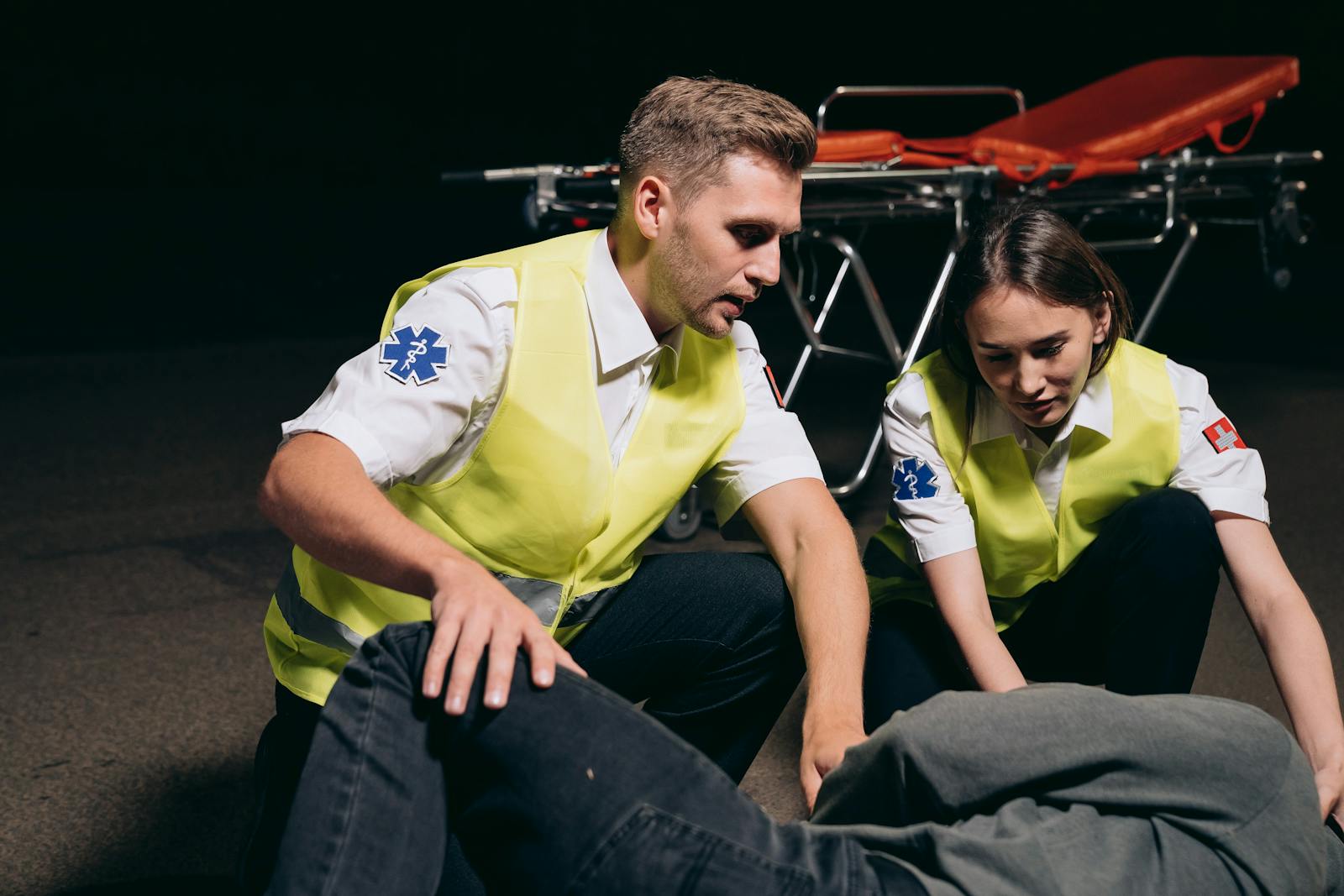In considering the complex landscape of workers’ compensation cases involving spine injuries, the role of the employer is paramount. From providing safe work environments to managing the intricacies of claims processes, employers hold significant responsibilities. Moreover, the long-term implications of spine injuries complicate matters, often requiring employers to participate in lengthy rehabilitation support and potentially face liability issues. The intricacies of these responsibilities and the consequences of inadequately fulfilling them are a compelling reason to explore this topic further.
Understanding Workers’ Compensation
In the vast majority of employment sectors, understanding workers’ compensation is essential as it serves as a safety net for employees who suffer injuries or illnesses due to their job responsibilities. This system provides financial assistance and medical benefits, ensuring that the burden of workplace incidents does not fall solely on the employee.
Workplace ergonomics plays a vital role in preventing injuries. Employers must prioritize creating an environment that minimizes risks and promotes employee health. By investing in ergonomic furniture, equipment, and proper training, employers can greatly reduce the occurrence of workplace injuries, thereby minimizing workers’ compensation claims.
However, in the unfortunate event of an injury, workers’ compensation also encompasses injury rehabilitation. This aspect is important as it aids in the employee’s recovery, helping them return to work sooner and in a healthier state. The system guarantees that the employee receives appropriate medical care, physical therapy, and other necessary treatments.
Understanding workers’ compensation is not just about knowing the benefits it provides. It is also about realizing the preventive measures, such as workplace ergonomics, and the rehabilitative efforts that form an integral part of this all-encompassing system.
Identifying Spine Injuries at Work
Identification of spine injuries within the workplace is a critical factor in ensuring the health and safety of employees. This necessitates an understanding of the symptoms of such injuries, the importance of promptly reporting any incidents, and the need for immediate medical attention. Each of these elements play a pivotal role in adequately addressing potential spine injuries and are integral to an employer’s responsibilities within workers’ compensation cases.
Recognizing Spine Injury Symptoms
Being able to promptly recognize the symptoms of a spinal injury in the workplace is an essential duty of employers, as swift action can mitigate long-term damage and facilitate effective workers’ compensation claims. This necessitates understanding the potential signs of such injuries, which can include severe back pain, weakness, numbness, or paralysis in any part of the body, and difficulty walking or maintaining balance.
Employers should be familiar with advanced diagnostic techniques to quickly identify these symptoms and begin immediate spine injury rehabilitation. By incorporating a holistic approach that includes education, medical management, and early intervention, employers can guarantee a safe, productive work environment while safeguarding employee health. This proactive approach is not just responsible, but also can help prevent potential litigation and financial loss.
Reporting Workplace Incidents
Ensuring timely reporting of workplace incidents, particularly those potentially involving spinal injuries, is an essential responsibility for employers seeking to uphold best practices in occupational safety and health. This process begins with equipping employees with injury prevention training to identify potential risks and minimize harm. Safety equipment provision also plays a significant role, as it mitigates the impact of accidents should they occur. Additionally, establishing a straightforward reporting system encourages employees to communicate incidents promptly. Swift reporting can aid in identifying patterns, preventing further injuries, and ensuring that the necessary actions are taken. Ultimately, integrating these strategies is pivotal in fostering a safer work environment and protecting both the company and its employees.
Importance of Immediate Medical Attention
While the prevention and reporting of potential spinal injuries in the workplace are essential, the importance of immediate medical attention in confirmed or suspected cases cannot be overstated.
- Emergency response training: This not only equips employees with the skills to provide immediate aid but also helps in identifying potential spinal injuries.
- Prompt diagnosis: The faster a spine injury is diagnosed, the better the likelihood of preventing further damage and beginning effective treatment.
- Initiating treatment: Immediate medical attention ensures that treatment begins promptly, reducing the risk of long-term complications.
- Post injury rehabilitation: Early intervention promotes a smoother rehabilitation process, hence facilitating quicker and more effective recovery.
In essence, immediate medical attention serves as a critical link between injury detection and post-injury care, greatly influencing the outcome.
The Role of Employers in Injury Prevention
How critical, one might ask, is the role of employers in preventing workplace spinal injuries? The answer is simply – exceedingly important. Employers bear a significant responsibility to guarantee a safe and secure workplace for their employees. This is not only a legal obligation but also a moral one.
Safety Training and Ergonomic Evaluation play a pivotal role in this prevention mechanism. Safety training helps equip employees with the knowledge and skills to perform their tasks without injury. It clarifies the correct way to use equipment, lift heavy objects, or maintain posture, reducing the risk of spine injuries considerably. Regular training sessions are essential to reinforce these safety measures and update workers about new safety protocols.
Ergonomic Evaluation, on the other hand, focuses on the optimization of work environments. It involves evaluating the physical setup of a workplace, including the design of workstations, tools, and equipment. The goal is to minimize strain and stress on employees’ bodies, especially the spine, and prevent injuries.
Proactive actions like these not only prevent catastrophic injuries but also foster a culture of safety and care in the workplace, thereby demonstrating the undeniable importance of the employer’s role in preventing spinal injuries.
Reporting Procedures for Spine Injuries
In the unfortunate event of a spinal injury at the workplace, it is essential that the incident is promptly and accurately reported, as this fundamental procedure initiates the process of workers’ compensation and guarantees the injured employee gets the necessary support and treatment.
There are four main steps to follow when reporting a spine injury:
- Immediate Reporting: The incident should be reported to the employer as quickly as possible. Any delay can complicate the legal implications and may negatively affect the compensation process.
- Detailed Documentation: The report should include detailed information about the incident, including the cause, nature of injury, and any witnesses. This helps determine the appropriate spinal rehabilitation strategies.
- Medical Evaluation: The injured employee should undergo a thorough medical examination. These findings should also be included in the report.
- Submission to the Insurance Company: The employer should submit the report to the workers’ compensation insurance company promptly to initiate the claim process.
Adherence to these steps ensures that both employer and employee obligations are met. Not only does this procedure align with legal requirements, but it also paves the way for the effective implementation of spinal rehabilitation strategies and fair compensation.

Employers’ Duty in Medical Assistance
Beyond the initial reporting process, an employer’s duty extends to guaranteeing prompt and appropriate medical assistance for the injured employee in spine injury cases. This involves not just immediate care, but also long-term treatment and rehabilitation plans aimed at restoring the employee’s health and functionality to the greatest extent possible.
Workplace ergonomics play a critical role in this aspect. It is the employer’s responsibility to provide a working environment that minimizes the risk of further aggravating the injury. This could mean adjusting the workspace to meet the employee’s physical needs or providing special equipment to facilitate their tasks.
Another key obligation lies in disability accommodations. Employers should proactively collaborate with the injured employee, their medical team, and potentially a workers’ compensation lawyer to identify necessary adjustments. This may include job restructuring, modified work schedules, or even reassignment to a vacant position.
It is important for employers to understand that their duty extends beyond just financial compensation. They have a moral and legal obligation to ensure the injured worker receives thorough medical assistance, which includes taking steps to facilitate their recovery and eventual return to work.
Workers’ Compensation Claim Process
Understanding the process of filing a workers’ compensation claim is vital both for the employer and the injured employee. It commences with the accurate and timely filing of the claim, followed by a thorough assessment of the severity of the injury. A detailed grasp of this procedure not only guarantees compliance with legal requirements but also promotes fair and efficient handling of such unfortunate incidents.
Filing the Claim
Getting through the complexity of filing a workers’ compensation claim for a spine injury demands a clear comprehension of both the employee’s and the employer’s roles and responsibilities, and the process starts with the essential step of notifying the employer about the injury.
- Prompt Notification: The employee must promptly notify the employer of the injury. This is pivotal in preventing claim denials due to late reporting.
- Injury Documentation: The employer should meticulously document the incident, injury, and any rehabilitation steps taken.
- Filing the Claim: The employer is responsible for filing the workers’ compensation claim with the insurance company.
- Follow-up: The employer should make sure the claim is processed accurately and timely, and that the employee receives the necessary support for injury rehabilitation.
This process ensures a fair and efficient claim filing, reducing potential disputes.
Assessing Injury Severity
Once the claim has been filed, the next important stage in the workers’ compensation process is the accurate assessment of the severity of the spine injury, as this will greatly influence the compensation and rehabilitation plan allocated to the injured employee. A meticulous injury classification is vital in this phase to establish the extent of damage and guide the necessary rehabilitation strategies. The severity of the injury will dictate the level and intensity of the treatment required. Additionally, this classification will aid in determining the amount of compensation due. It is essential for employers to guarantee an accurate and thorough evaluation of the injury’s severity, not just for fair compensation and recovery planning, but also to uphold their responsibilities in safeguarding their employees’ welfare.
Navigating Return-to-Work Programs
In the complex landscape of workers’ compensation spine injury cases, a well-structured return-to-work program plays a crucial role in the recovery process, guaranteeing that employees can safely and effectively reintegrate into their workplace. An employer’s responsibilities extend beyond providing workers’ compensation benefits; they must also navigate the delicate balance between facilitating recovery and maintaining productivity.
- Workplace Ergonomics: Employers must make sure that the work environment is adjusted to accommodate the employee’s new physical limitations. This might involve modifying workstations, providing ergonomic equipment, or restructuring tasks.
- Vocational Rehabilitation: This is a service aimed at helping injured workers return to the workforce. It may include job training, career counseling, and job modification.
- Medical Follow-Up: Regular medical assessments should be conducted to monitor the employee’s progress and adapt the return-to-work program accordingly.
- Psychosocial Support: The psychological impact of a spine injury can be significant. Providing support in the form of counseling or peer support groups can be beneficial.
Employer Liability in Spine Injury Cases
While employers have a significant role in aiding the recovery of employees with spinal injuries, they also must confront the possibility of legal liability in these complex cases. This liability can stem from the failure to adhere to proper workplace ergonomics and safety training protocols, which are essential in preventing spinal injuries.
Workplace ergonomics, the science of designing the job, equipment, and workplace to fit the worker, is an important aspect of employee safety. Employers who neglect this area may face legal repercussions if an employee suffers a spine injury due to poor ergonomic conditions. Likewise, safety training is an employer’s responsibility. Effective training should educate employees about potential hazards, proper use of safety equipment, and correct body mechanics to prevent spine injuries.
Therefore, employers should invest time and resources into maintaining ergonomic workplaces and conducting regular safety training to reduce their liability. This not only enhances the safety and wellness of employees but also shields the company from potential lawsuits and workers’ compensation claims. Ignorance or negligence in these areas can result in severe legal and financial consequences, emphasizing the significant role of employers in preventing workplace spine injuries.

Handling Long-Term Disability Cases
Steering through the complexities of long-term disability cases presents a unique challenge for employers, particularly when the disability involves a spinal injury. Frequent changes in medical conditions, coupled with varying interpretations of disability law, necessitate a proactive and well-informed approach.
- Understanding the Medical Condition: Employers must familiarize themselves with the specifics of spinal injuries to comprehend the extent of disability and work restrictions. Understanding the employee’s medical condition is pivotal in making informed decisions about disability accommodations.
- Adapting Work Environment: After understanding the medical condition, employers need to make necessary disability accommodations. This might involve altering the physical workspace, modifying work schedules, or even redefining job roles, ensuring the employee can continue to contribute effectively.
- Insurance Negotiations: Employers need to actively participate in insurance negotiations. This ensures they secure a fair settlement that adequately covers the employee’s medical expenses, rehabilitation costs, and loss of earnings.
- Maintaining Open Communication: Lastly, maintaining open lines of communication with the injured employee is important. It fosters trust, ensures the employee is aware of their rights, and keeps them updated on the progress of their case.
Ensuring Compliance With Laws and Regulations
Understanding the maze of laws and regulations concerning workers’ compensation for spinal injuries is an essential responsibility that falls upon the shoulders of employers. This responsibility not just guarantees the fair treatment of injured employees, but also safeguards the organization from the legal implications of non-compliance.
Regulatory adherence is not optional; it is a mandatory part of doing business. All employers must stay updated on the evolving legislation regarding workers’ compensation for spine injuries, which can differ substantially across different jurisdictions. These laws often include stringent requirements about reporting injuries, providing adequate medical care, and compensating employees for lost earnings.
Failure to comply can result in significant financial penalties, legal sanctions, and damage to the company’s reputation. Hence, it is important for employers to develop effective strategies for compliance, which may include regular legal consultation, thorough employee training, and maintaining meticulous records of any workplace injuries and the subsequent actions taken.
The legal implications of non-compliance cannot be overstated. Employers must understand that the cost of compliance is a worthy investment to protect their employees’ rights and well-being, and to secure the longevity of their business in a legally-compliant manner.
Case Study: Handling Spine Injury Cases
To effectively manage workers’ compensation cases, particularly those involving spinal injuries, a thorough understanding of the documentation process and claim management is essential. Through a detailed case study, we will explore these vital elements, demonstrating how they contribute to a successful resolution of spine injury claims. This analysis will provide employers with actionable insights to streamline their approach towards these complex cases.
Spine Injury Documentation Process
Invariably, proper documentation serves as a critical component in handling spine injury cases in workers’ compensation claims, providing essential evidence for both employers and employees. The process of documentation is inexorably linked to injury rehabilitation and has significant legal implications.
- Initial Report: Documentation begins with a detailed initial incident report, capturing the circumstances and immediate effects of the injury.
- Medical Records: These provide essential, objective information on the nature and severity of the spine injury.
- Rehabilitation Reports: These outline the progress of recovery, vital in evaluating the need for ongoing support.
- Workplace Records: These can indicate if the employer provided a safe environment, potentially affecting the legal outcome of the claim.
Through this process, employers can fulfill their responsibilities and employees can safeguard their rights are protected.
Compensation Claim Management
Traversing through the labyrinth of compensation claim management, particularly in the context of spine injury cases, necessitates an astute understanding of both legal obligations and human empathy. Employers must vigilantly examine each claim, discerning the authenticity of the injury while also preventing injury fraud. A hasty claim denial could lead to legal ramifications and damage the employer-employee relationship irreparably.
Therefore, it is vital to strike a delicate balance between skepticism and trust. Employers should apply a detailed, methodical approach to claim evaluation, using available evidence and expert opinions. This approach not only safeguards the company’s interests but also ensures that genuine victims of workplace spine injuries receive the compensation they rightfully deserve.
Frequently Asked Questions
What Are the Psychological Impacts of Workplace Spine Injuries on Employees?
Workplace spine injuries often lead to significant psychological impacts on employees, including reduced emotional resilience and challenges in trauma coping. The effects can manifest as anxiety, depression, and post-traumatic stress disorder, impacting overall quality of life.
How Can Employers Support Mental Health After a Spine Injury at Work?
Employers can support mental health after a spine injury by implementing Emotional Support Strategies such as counseling services, and Adaptive Workplace Measures like flexible hours or ergonomic adjustments, to foster a supportive and accommodating environment.
What Role Does Workers Compensation Insurance Play in Employee Rehabilitation?
Workers’ compensation insurance plays a vital role in employee rehabilitation, providing necessary funds for various rehabilitation methods. This insurance coverage guarantees workers receive the care and support they need to recover and reintegrate into the workforce.
Can an Employee Sue an Employer Despite Receiving Workers Compensation Benefits?
Yes, an employee can sue an employer despite receiving workers’ compensation benefits, typically through legal loopholes. This can occur if there is evidence of egregious employer negligence leading to the employee’s injury.
What Financial Assistance Is Available for Workers Unable to Return to Work Post-Injury?
Injured workers unable to resume work can avail financial help through injury adjustments and disability benefits. This assistance covers medical expenses, income replacement, and vocational rehabilitation, ensuring financial stability during their recovery period.

